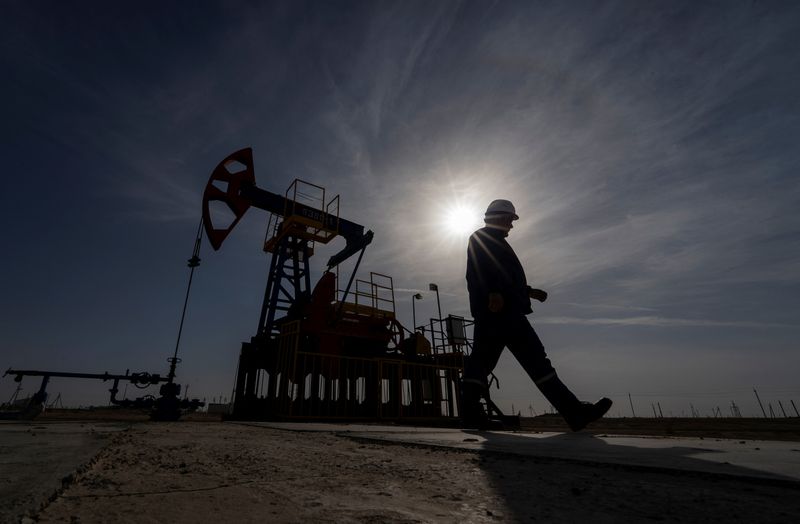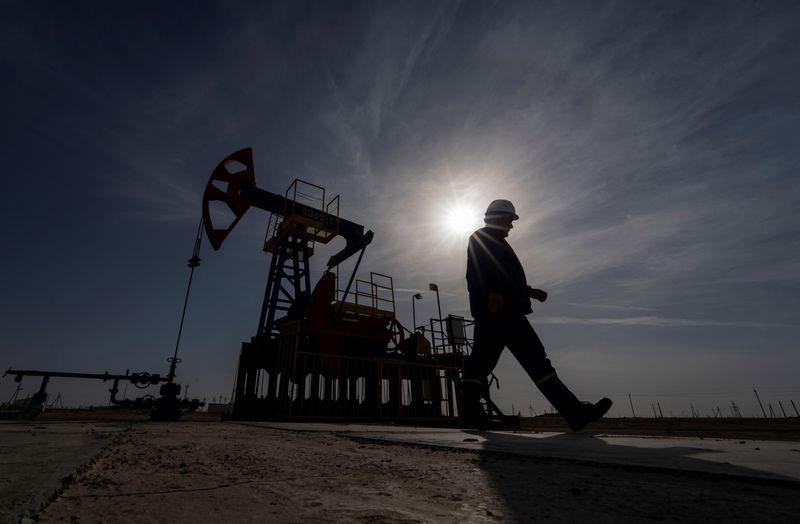
By Nicole Jao
NEW YORK (Reuters) -Oil prices were up slightly on Wednesday after a larger-than-expected decline in U.S. crude stocks, but thin trading ahead of the U.S. Independence Day holiday and concerns about rising global inventories limited any rise in crude prices.
Brent crude futures edged up 5 cents to $86.29 a barrel by 11:42 a.m. EDT (1542 GMT). U.S. West Texas Intermediate (WTI) crude futures gained 1 cent to $82.81.
The U.S. Energy Information Administration (EIA) reported a 12.2 million draw in the country’s crude oil barrels in storage last week, which was larger than analysts’ expectations in a Reuters poll for a 680,000-barrel draw.[EIA/S]
“Strong exports, a slight drop in imports, and a rebound in refinery runs colluded to draw crude inventories by a whopping 12 million barrels,” said Kpler oil analyst Matt Smith.
But the market’s reaction was muted partly due to lower trading volumes ahead of Independence Day, analysts noted.
Both benchmarks hit their highest since April in the previous session after the U.S. National Hurricane Center said Hurricane Beryl was expected to weaken into a tropical storm by the time it entered the Gulf of Mexico this week. Hurricanes can disrupt oil production and tighten supply.
OPEC output rose for a second consecutive month in June, a Reuters survey found on Tuesday, which also weighed on oil prices. Higher supply from Nigeria and Iran offset the impact of voluntary supply cuts by other members and the wider OPEC+ alliance.

“OPEC+ was reported to have increased production in June despite pledges to keep quotas in check through the third quarter, and lingering concerns over a tepid recovery in China sent a bearish signal,” Panmure Gordon’s Kelty said.
Also dampening prices were surveys that showed that China’s services activity expanded at the slowest pace in eight months and confidence hit a four-year low in June. Overall business growth across the euro zone also slowed sharply last month. China is the largest importer of crude barrels, and a slowdown in the country’s economic activity can damage oil demand.
This post is originally published on INVESTING.




